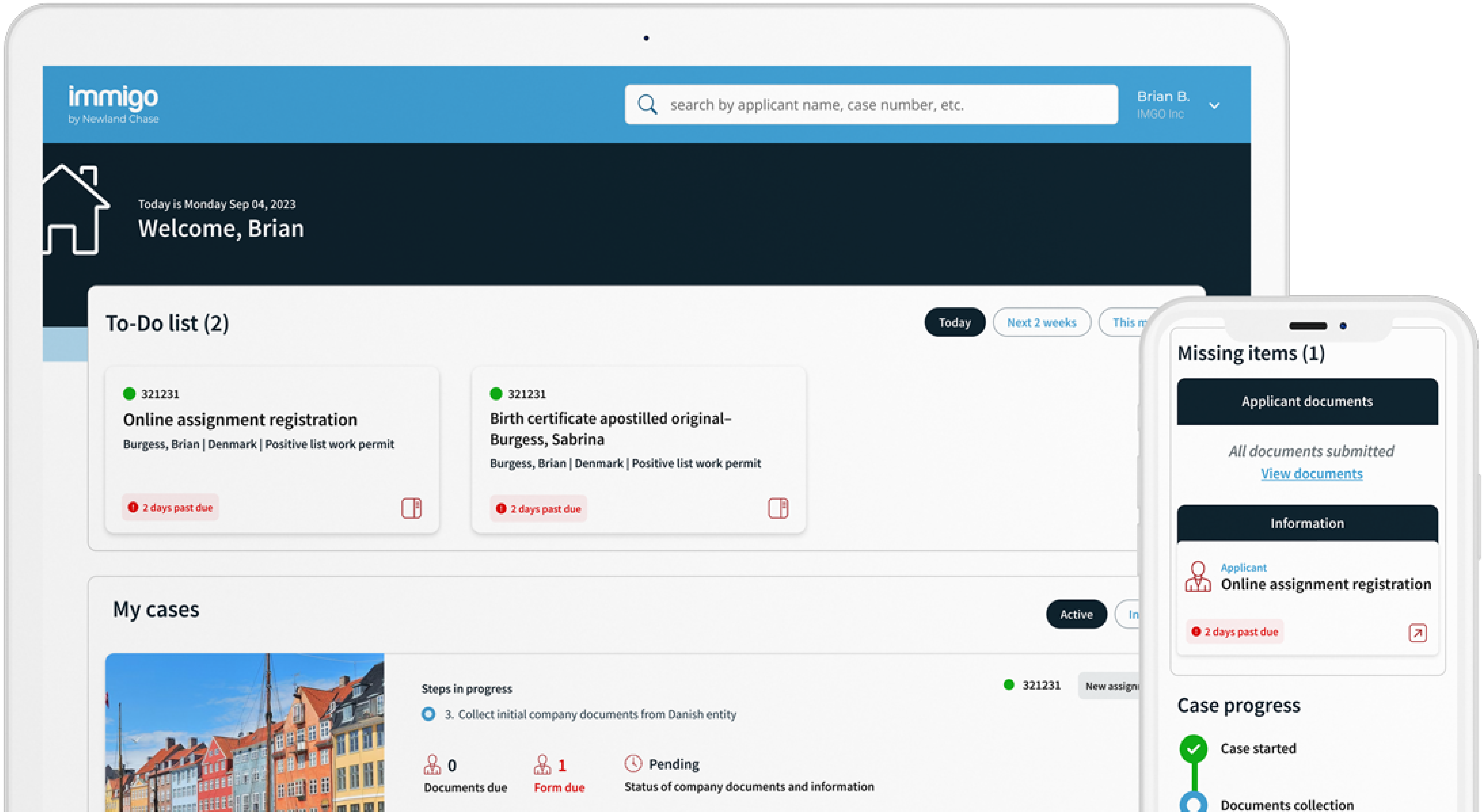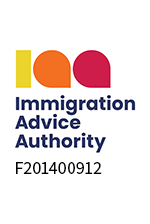Get The Visibility Your Company Needs
Reduce compliance risks and mobility costs while managing individual and project-related travel with ImmiSMART: the solution that unifies your travel and mobility programs.
EUROPEAN UNION and UKRAINE: EU Issues Operational Guidelines for Temporary Protection Directive (TPD) (2001/55/EC)
March 18, 2022
The European Commission (EC) issued new Operational Guidelines for the Temporary Protection Directive (TPD) (2001/55/EC), which are aimed at both supporting the Member States in implementing the Directive and helping “those arriving to have a consistent and effective level of rights…”
Commissioner for Home Affairs, Ylva Johansson said of the guidelines:
In a matter of days, 3 million people crossed into the EU. The show of solidarity has been immense and the reaction of the authorities impressive; but real challenges exist to ensure national systems do not become overwhelmed and that people enjoy the protection they deserve. Based on questions from Member States, we are proposing the following operational guidelines which we will regularly update to make sure the Commission supports Member States every step of the way – from arrival to integration.
Overview of Key Guidelines/Clarifications
The following are the key takeaways and clarifications from the new guidelines:
- Who is entitled to temporary protection – no major changes from the original TPD details, but confirmation that national implementation of TPD must cover, at minimum, the following individuals:
- Ukrainian nationals residing in Ukraine who have been displaced on or after 24 February 2022 and their family members;
- Stateless persons, and nationals of third countries other than Ukraine, who benefitted from international protection or equivalent national protection in Ukraine before 24 February 2022 and who have been displaced from Ukraine on or after 24 February 2022, and their family members;
- Temporary protection or adequate protection under Member States’ national law shall apply to stateless persons and nationals of third countries other than Ukraine who can prove that they were legally residing in Ukraine before 24 February 2022 on the basis of a valid permanent residence permit issued in accordance with Ukrainian law, and who are unable to return in safe and durable conditions to their country [of origin] or region [within their country] of origin.
- Definition of “Family Member” – for Ukrainian citizens:
- Spouse of the person covered by temporary protection, or the unmarried partner in a stable relationship, where the legislation or practice of the Member State treats unmarried couples in a comparable manner under its national law.
- Minor-aged unmarried children of the person covered by temporary protection or of his/her spouse, without distinction as to whether they were born in or out of wedlock or adopted.
- Other close relatives who lived together as part of the family unit at the time of the circumstances surrounding the mass arrivals of displaced persons, and who were wholly or mainly dependent on the person covered by temporary protection.
Family members of stateless persons or third-country nationals with international or national protection, and Permanent Residents of Ukraine who cannot safely return to their country of origin are not specifically protected under the TPD; however, these guidelines strongly encourage Member States to include these individuals under their national TPD laws.
- Encouragement to protect additional individuals – including:
- Those who have been “displaced from Ukraine before 24 February 2022 or who found themselves outside Ukraine before that date, for instance because of work, study, holidays, family, or medical visits or other reasons.”
- Stateless persons and third-country nationals who can prove they were legally residing in Ukraine before 24 February 2022 on the basis of a valid permanent residence permit, regardless of whether they can safely and durably return to their country or region of origin.
Note that this is simply a recommendation from the European Commission and not a requirement for Member States to enact.
- Confirmation of the necessary evidence needed to obtain TPD status in an EU Member State – applicants should only have to present evidence “to demonstrate his/her nationality, his/her international protection or equivalent protection status, residence in Ukraine, or family link as appropriate.” Member States are also encouraged to consider expired documents as well. The following documents should be considered to prove Ukrainian nationality:
- Passports of any kind – national, diplomatic, service, collective, and surrogate passports (including children’s passports);
- National Identity Cards – including temporary and provisional;
- Military Service Books and Military Service Cards;
- Seaman’s Registration Books, Skipper’s Service Cards, and Seaman’s Passports;
- Citizenship Certificates; and
- Other Official Documents – that mention or indicate citizenship.
In addition, if an individual is unable to present any of the necessary evidence to establish temporary protection or it is too difficult to establish that an individual cannot safely and securely return to their country of origin, the guidelines recommend that the individual is redirected to the asylum procedure for the Member State in question.
- Ukrainian Permanent Residents and persons with protected status – specifically, what is mean by being “unable to return in safe and durable conditions to the country or region of origin.”
- Inability to return in safe conditions can result from: 1. situations of armed conflict or endemic violence, or 2. risks of persecution on account of race, religion, nationality, membership of a particular social group or political opinion and risk to be subjected to the death penalty, torture or other inhuman or degrading treatment or punishment, in view of the circumstances prevailing in the third country concerned or of their individual situation.
- For the return to be durable: 1. the person concerned will have real prospects of having his/her basic needs addressed in his/her country/region of origin, including access to means of survival, water, food, clothing or housing; and 2. the person concerned will have real possibilities to be reintegrated into the society and societal structures as well as in the labor market and will have non-discriminatory access to basic public services.
- Guidance on Children – the guidelines include a dedicated chapter on children, which estimates say represent more than half of the refugees who have departed Ukraine. Unaccompanied children and teenagers should be immediately appointed with a legal guardian or appropriate representation. The Commission is also coordinating relocation efforts for the transfers of unaccompanied children and teenagers to other Member States. All children fleeing from the war, regardless of their status, should have full protection and swift access to their specific rights (including education, healthcare, psychosocial assistance).
- Confirmation of specific rights – a residence permit should serve as a document to prove someone’s status with other authorities, such as employment offices and services, schools, hospitals. Where residence permits are still pending, Member States should facilitate the opening of bank accounts and access to relevant services on the basis of an ID document or proof of entry into the EU after 24 February 2022.
- Confirmation of free movement (before and after issuance of residence permits) – Ukrainian nationals holding biometric passports or nationalities exempt from the requirement to be in possession of a short-stay visa for entering the Union, have the right to move freely within the Schengen area after being admitted into the territory for a 90-day period within a 180-day period.
For non-visa exempt nationalities, the Commission recommends that Member States of first entry issue 15-day visas as the border and that secondary Member States do not impose financial penalties on carriers transporting persons enjoying temporary protection but not in possession of valid documents to enter. After a residence permit is issued, persons with temporary protection have the right to move freely.
Newland Chase Insights
The European Union’s unprecedented rapid mobilization and organizational efforts to provide Ukrainian refugees with a consistent, streamlined, and relatively uncomplicated immigration process across the region should be celebrated. EU Member States have shown flexibility and willingness to open their borders, labor markets, schools, and housing to the refugees affected by the crisis in Ukraine and these guidelines provide welcome clarifications to further harmonize the regional resettlement efforts. Full text of the guidelines can be found on the European Commission’s website here.
Newland Chase continues to monitor the situation in Ukraine diligently and remains in close contact with our partners and team members throughout the region. To access our extensive coverage on the crisis, please visit our dedicated resource page for all the latest updates, overviews, and webinars.
As always, don’t hesitate to reach out to your Newland Chase dedicated contact or submit an inquiry here should you have any specific questions regarding this announcement.
This immigration update is for informational purposes only and is not a substitute for legal or scenario-specific advice. Furthermore, it is important to note that immigration announcements are subject to sudden and unexpected changes. Readers are encouraged to reach out to Newland Case for any case- or company-specific assessments.




